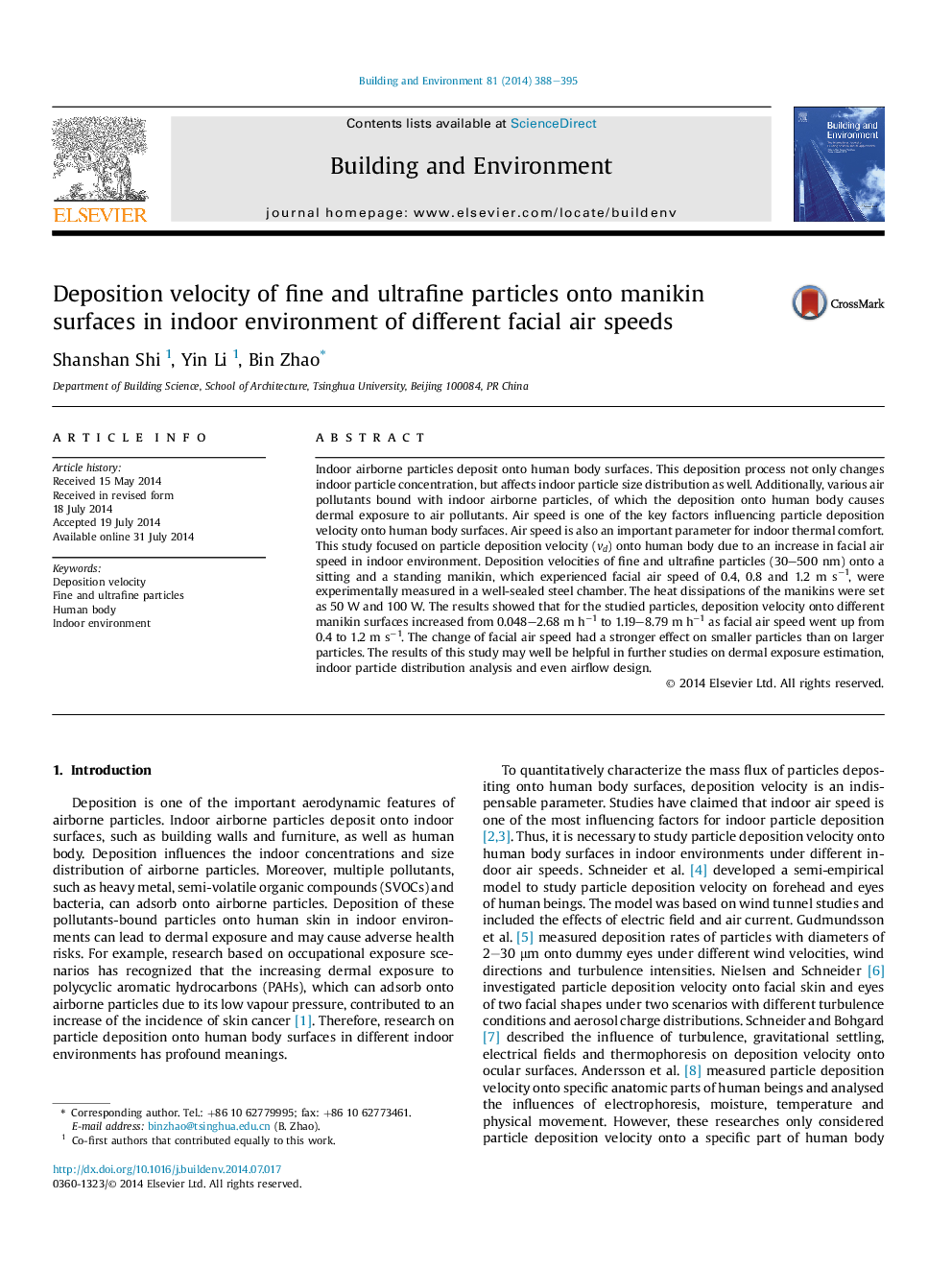| Article ID | Journal | Published Year | Pages | File Type |
|---|---|---|---|---|
| 6700410 | Building and Environment | 2014 | 8 Pages |
Abstract
Indoor airborne particles deposit onto human body surfaces. This deposition process not only changes indoor particle concentration, but affects indoor particle size distribution as well. Additionally, various air pollutants bound with indoor airborne particles, of which the deposition onto human body causes dermal exposure to air pollutants. Air speed is one of the key factors influencing particle deposition velocity onto human body surfaces. Air speed is also an important parameter for indoor thermal comfort. This study focused on particle deposition velocity (vd) onto human body due to an increase in facial air speed in indoor environment. Deposition velocities of fine and ultrafine particles (30-500 nm) onto a sitting and a standing manikin, which experienced facial air speed of 0.4, 0.8 and 1.2 m sâ1, were experimentally measured in a well-sealed steel chamber. The heat dissipations of the manikins were set as 50 W and 100 W. The results showed that for the studied particles, deposition velocity onto different manikin surfaces increased from 0.048-2.68 m hâ1 to 1.19-8.79 m hâ1 as facial air speed went up from 0.4 to 1.2 m sâ1. The change of facial air speed had a stronger effect on smaller particles than on larger particles. The results of this study may well be helpful in further studies on dermal exposure estimation, indoor particle distribution analysis and even airflow design.
Related Topics
Physical Sciences and Engineering
Energy
Renewable Energy, Sustainability and the Environment
Authors
Shanshan Shi, Yin Li, Bin Zhao,
